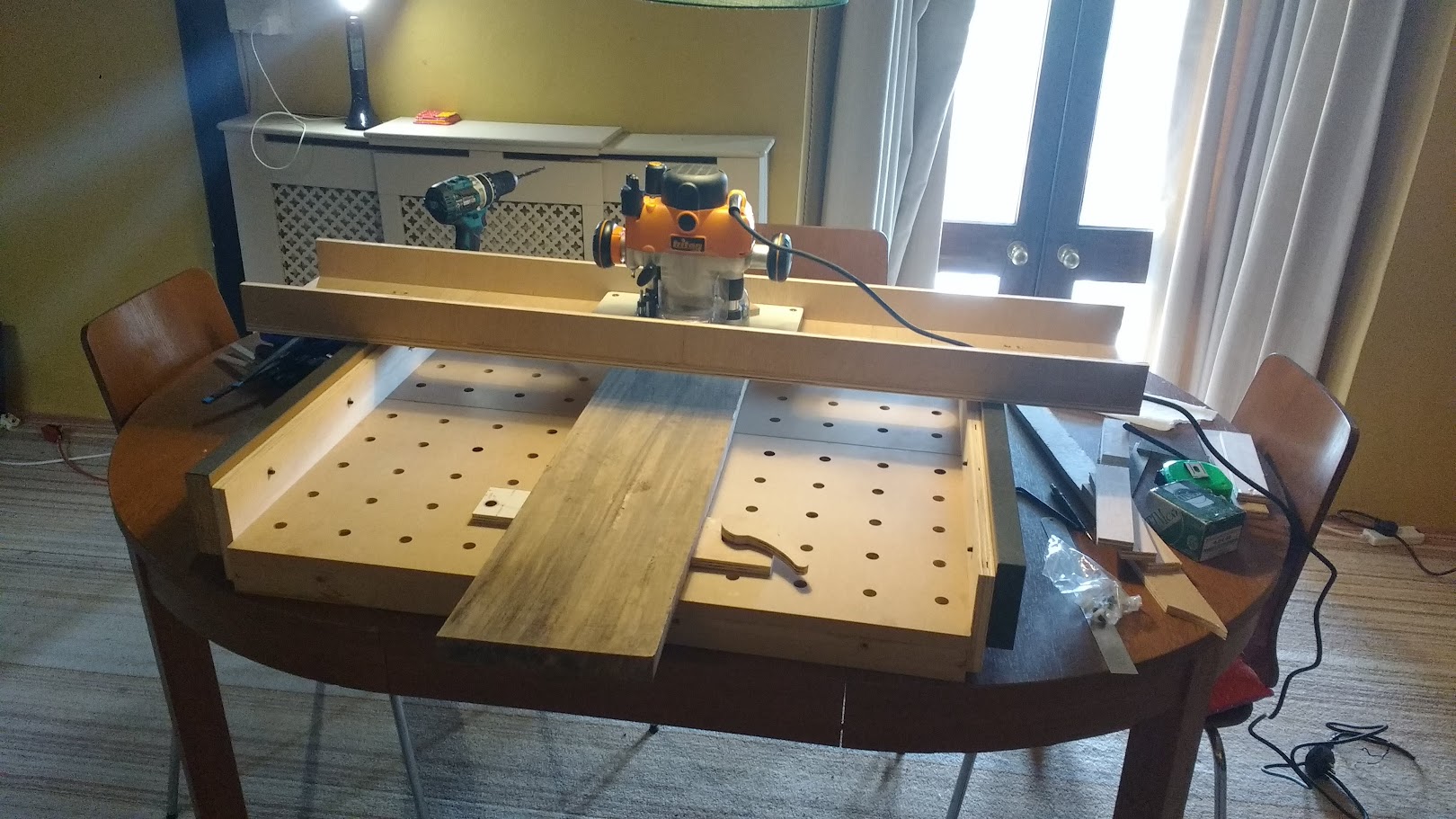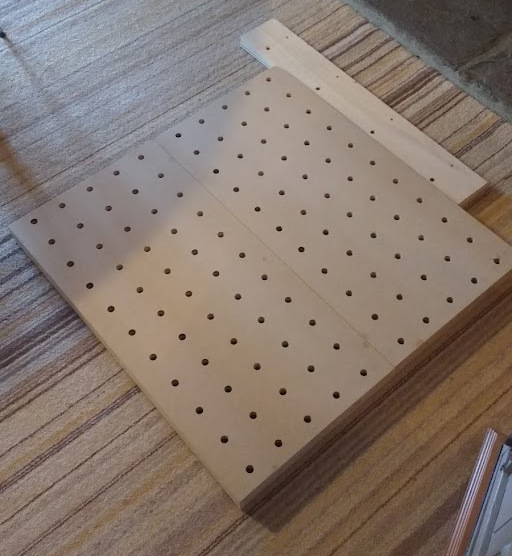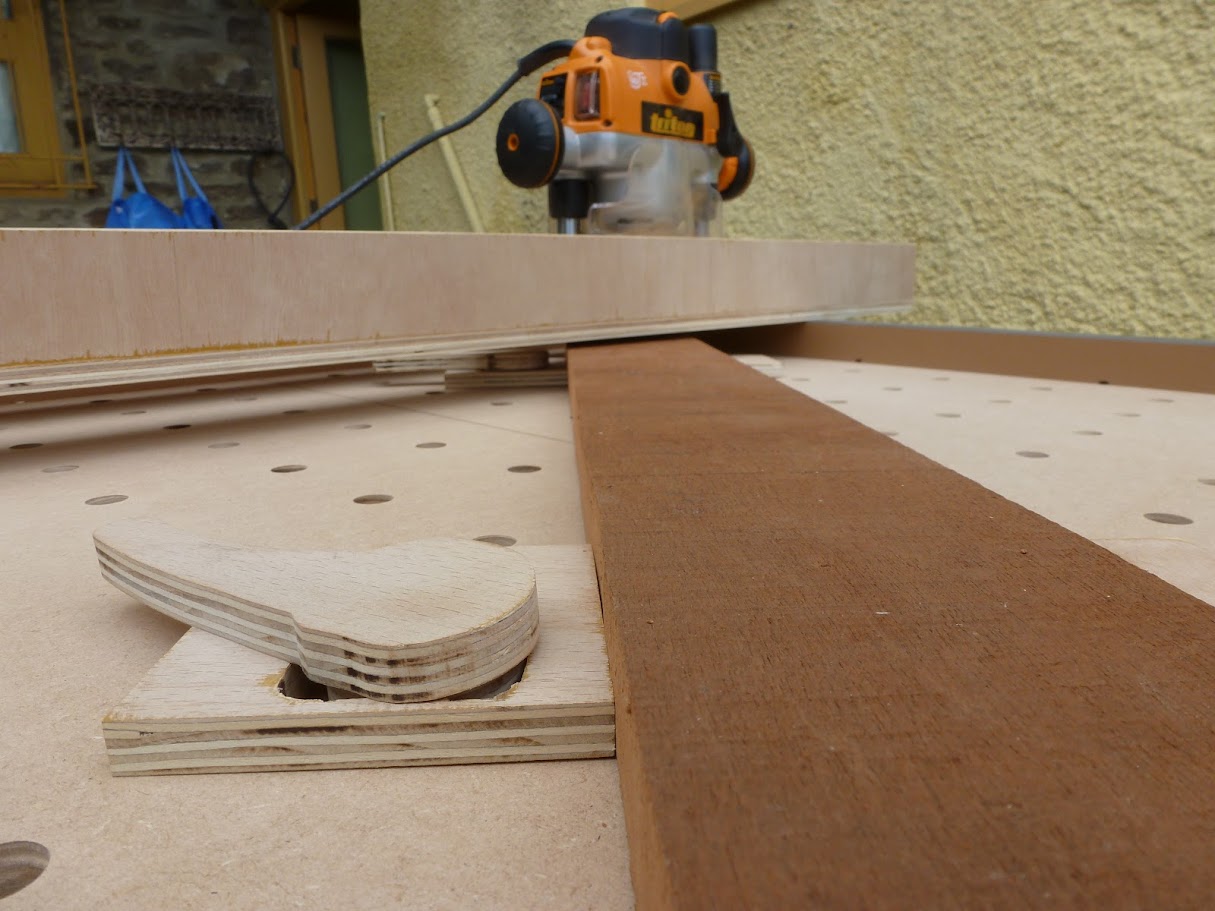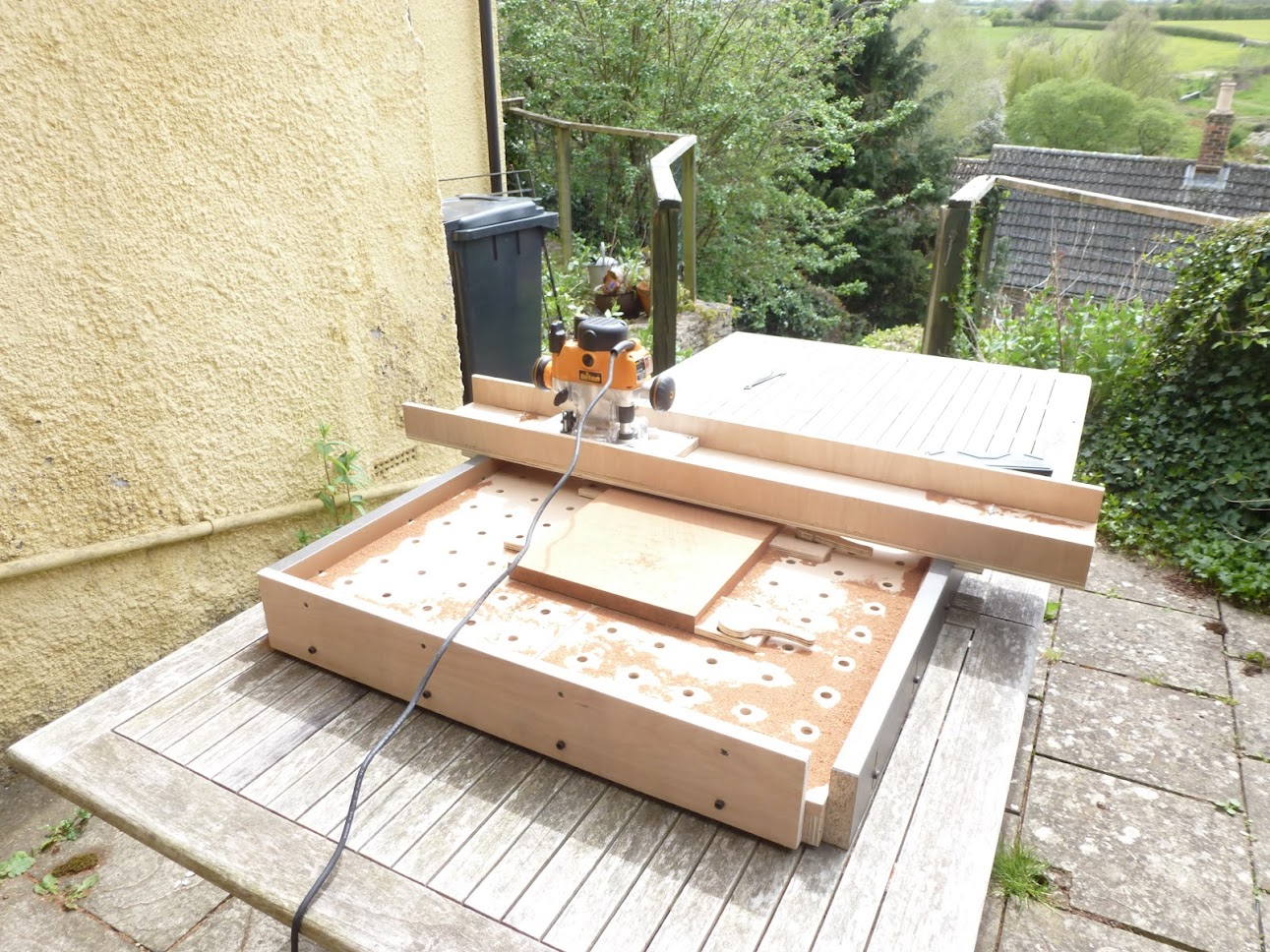Compact Router Sled
03-05-2021
There are a plethora of router sled designs on the internet, but they all tend to be designed for the purpose of levelling large slabs and surfacing heavy ornamental items. I don’t do many of these types of projects myself, so my main motivation for building this router sled was to have something that can do the smaller, more accurate work that would normally be done with a jointer and thicknesser planer. I don’t really have space for these bigger woodworking tools in my living-room workshop, but I stil need to square up large flat bits of wood for building guitars.
Unlike most of the designs online, my router sled incorporates a reference surface for holding down bits of wood. This does make the jig bulkier to store, and reduces the flexibility of the setup, but it allows me to get far more accurate results than I would be able to get with an open-frame router sled.
The base slabs are made from 16mm MDF backed with 40mm plywood struts. The MDF has very good thickness tolerance, but the boards themselves do have some flex, so need to be constrained to create a reference surface. I used my ‘jointer’ setup on my router table to create perfectly flat plywood struts and glued these in a grid on the underside of the panels.
The base is built in two halves that can be bolted together on both edges, so the sled can be re-configured for working with larger/smaller bits of lumber. It also has the added bonus of making the sled pack away a bit more compactly.
The lumber I need to process is often quite small, so I can’t rely on gravity alone to hold the wood in place. The base plates have a grid of dog holes, and I’m using Marius Hornberger’s excellent homemade cam clamps as a versatile clamping mechanism. The runners for the sled are made from an offcut of melamine worktop, which gives me a nice smooth surface that lets me easily slide the sled across without it jamming.
The Triton router I use with this sled is quite heavy, so I needed to make my sled quite beefy to stop it sagging in the middle when making cuts. It is constructed from 10mm plywood with 50mm support braces. Again, I used my jointer setup to create a reference edge and glued these to the main sled piece. One piece of advice I got from some woodworking forums is to avoid screws or any fastenings going into the side of the sled, as the screws cause the wood to expand slightly, ruining the nice flat reference surface that is imparted from the jointed edge.
This router sled isn’t going to win any awards, but with careful setup I can get reasonably good results. I have managed to get approx. 0.5mm flatness tolerance across a 600mm blank, and when used with a melamine backer board I can even make nice bookmatched guitar tops down to about 4mm thickness without resawing equipment!
Now I’m at the stage that I have enough tools and jigs to make the next scratch guitar build. All I’ve got to do now is get round to making it!




